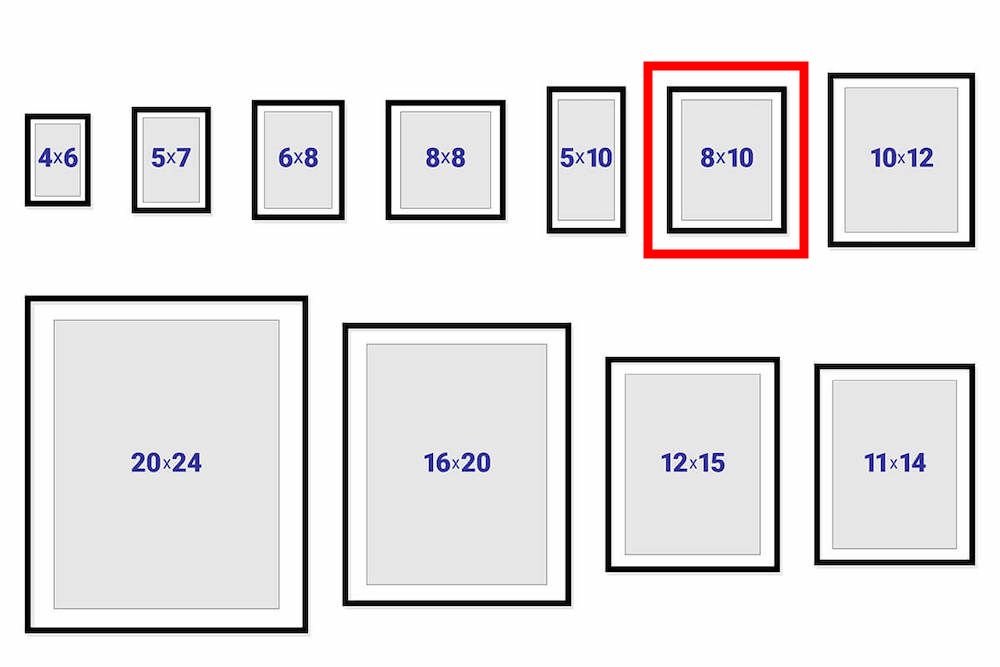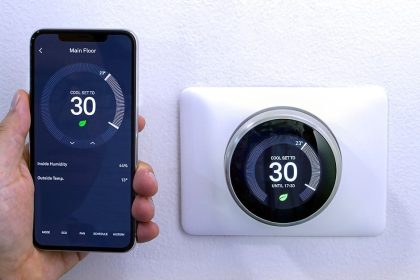In the realm of visual representation, the dimensions of a picture hold significant importance. Whether you’re an artist, a photographer, or simply someone fascinated by the world of images, understanding the physical dimensions of a picture can enhance your appreciation and comprehension of its impact. One of the most common sizes encountered is the 8×10 picture format. In this exploration, we delve into the depths of its dimensions, unraveling its significance, utility, and implications across various domains How Big is an 8×10 Picture.
The Basics: Unveiling the Dimensions
An 8×10 picture, as the name suggests, comprises two primary measurements: 8 inches in width and 10 inches in height. These measurements, though seemingly straightforward, underpin a myriad of considerations within the realms of photography, art, printing, and visual communication. While these dimensions provide a standard framework, their implications extend far beyond mere numbers, influencing composition, framing, and presentation.
Understanding the Scale: From Inches to Context
In grasping the scale of an 8×10 picture, it’s crucial to contextualize these dimensions within our everyday experiences. Imagine holding a rectangular piece of paper, 8 inches wide and 10 inches tall, within your hands. Visualize its proportions, its potential for capturing moments, evoking emotions, or immortalizing scenes. This mental exercise underscores the tangible nature of these dimensions, bridging the conceptual gap between measurement and perception.
Practical Applications: Where Does an 8×10 Picture Fit?
The 8×10 picture format finds widespread utility across diverse domains. In photography, it serves as a popular choice for portraits, landscapes, and still-life compositions. Its balanced proportions offer flexibility in framing subjects, while its compact size facilitates easy handling and display. Moreover, within the realm of art and visual communication, the 8×10 format provides a standardized canvas for expression, enabling artists to showcase their creativity within defined spatial constraints.
Framing Perspectives: Exploring Aspect Ratios
Beyond its absolute dimensions, the aspect ratio of an 8×10 picture merits consideration. The aspect ratio, defined as the ratio of width to height, influences the visual composition and perception of an image. In the case of an 8×10 picture, the aspect ratio is 4:5, signifying a moderate elongation along the horizontal axis. This aspect ratio, characterized by its versatility and balance, aligns with aesthetic preferences and printing standards, rendering it well-suited for various applications.
Printing Precision: Navigating Resolution and Quality
In the realm of printing, the dimensions of an 8×10 picture intersect with considerations of resolution and image quality. The resolution, measured in dots per inch (DPI), determines the level of detail and clarity achievable in printed images. For an 8×10 picture, achieving optimal print quality necessitates a resolution of at least 300 DPI, ensuring crispness and fidelity in reproduction. Thus, photographers and printmakers must calibrate their equipment and settings to uphold the integrity of their visual creations.
Spatial Dynamics: Integrating 8×10 Pictures into Environments
The integration of 8×10 pictures within physical spaces encompasses considerations of layout, arrangement, and visual harmony. Whether adorning gallery walls, embellishing living spaces, or augmenting office interiors, the placement of these pictures influences the ambiance and narrative of the environment. Through strategic positioning and juxtaposition, individuals can curate immersive experiences, inviting viewers to engage with the stories and emotions encapsulated within each frame.
Cultural Significance: Contextualizing Visual Representation
Within the broader cultural landscape, the dimensions of an 8×10 picture resonate with historical, social, and aesthetic narratives. From the iconic portraits captured by renowned photographers to the intimate snapshots immortalized in family albums, these pictures serve as vessels of memory, identity, and heritage. Their dimensions, imbued with symbolic significance and cultural connotations, evoke a sense of nostalgia and resonance, transcending temporal and spatial boundaries.
Technological Advancements: Evolving Trends and Innovations
The proliferation of digital technologies has revolutionized the landscape of visual representation, expanding the horizons of creativity and accessibility. With the advent of high-resolution cameras, image editing software, and online platforms, individuals wield unprecedented power to capture, manipulate, and share their visual narratives. In this digital age, the dimensions of an 8×10 picture serve as a bridge between the virtual and the physical, facilitating seamless transitions between digital screens and tangible prints.
Conclusion: Dimensional Insights and Creative Explorations
In conclusion, the dimensions of an 8×10 picture encompass far more than numerical measurements—they encapsulate a world of creativity, expression, and storytelling. From the precision of printing presses to the intimacy of gallery spaces, these pictures traverse realms of artistry, technology, and human experience. As we navigate the complexities of visual representation, let us cherish the power of dimensions to shape perception, evoke emotion, and ignite imagination. In the tapestry of images that adorn our lives, the 8×10 picture stands as a timeless testament to the beauty of dimensionality and the boundless possibilities of visual exploration.
How Big is an 8×10 Picture: FAQ
1. What are the dimensions of an 8×10 picture?
- An 8×10 picture typically measures 8 inches in width and 10 inches in height.
2. What is the aspect ratio of an 8×10 picture?
- The aspect ratio of an 8×10 picture is 4:5, meaning that for every 4 units of width, there are 5 units of height.
3. Where is the 8×10 picture size commonly used?
- The 8×10 picture size is commonly used in photography, printing, art, framing, and various visual communication applications.
4. What are some common applications of an 8×10 picture?
- An 8×10 picture is often used for portraits, landscapes, still-life compositions, art prints, family photos, and decorative purposes.
5. What resolution is recommended for printing an 8×10 picture?
- For optimal print quality, it is recommended to use a resolution of at least 300 dots per inch (DPI) when printing an 8×10 picture.
6. How does the aspect ratio of an 8×10 picture affect its composition?
- The 4:5 aspect ratio of an 8×10 picture provides a balanced and versatile composition, making it suitable for a wide range of subjects and framing options.
7. Can I resize or crop images to fit the 8×10 picture format?
- Yes, images can be resized or cropped to fit the 8×10 picture format using various image editing software or tools.
8. Are there alternative sizes similar to the 8×10 picture format?
- Yes, some alternative sizes similar to the 8×10 picture format include 16×20, 11×14, and 5×7, each offering different aspect ratios and dimensions.
9. How can I ensure my 8×10 picture maintains its quality when printed?
- To ensure your 8×10 picture maintains its quality when printed, use high-resolution images, select appropriate printing settings, and choose high-quality printing materials.
10. Where can I find frames or mats for an 8×10 picture?
- Frames and mats for 8×10 pictures are available at art supply stores, framing shops, online retailers, and home decor stores.
11. What are some creative ways to display 8×10 pictures?
- Creative ways to display 8×10 pictures include arranging them in a gallery wall, using multi-photo frames, creating themed collages, or incorporating them into personalized gifts or crafts.
12. Can I use digital files of 8×10 pictures for online sharing or social media?
- Yes, digital files of 8×10 pictures can be shared online or on social media platforms after resizing them to fit the respective platform’s requirements.
13. Are there any historical or cultural associations with the 8×10 picture size?
- The 8×10 picture size has been widely used in photography and printing throughout history, but it may not have specific cultural associations beyond its practicality and aesthetic appeal.
14. How can I determine the best size for printing or displaying my pictures?
- Consider the subject matter, intended use, available space, and personal preferences when determining the best size for printing or displaying your pictures.
15. Can I print larger or smaller versions of an 8×10 picture?
- Yes, you can print larger or smaller versions of an 8×10 picture by resizing the image and adjusting the print settings accordingly.
Also Read: https://realitypanel.com/















